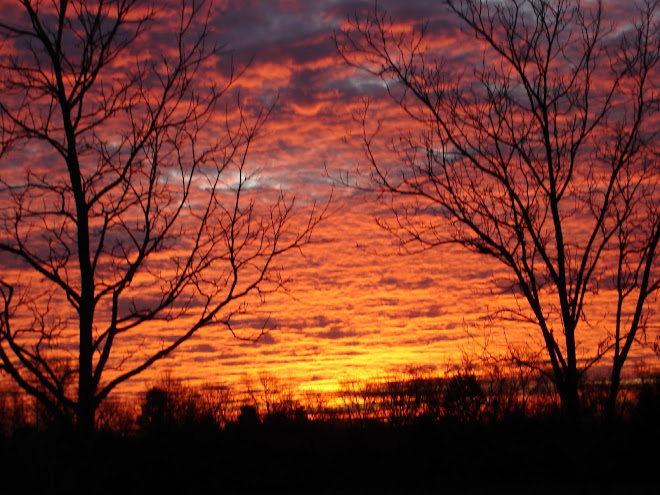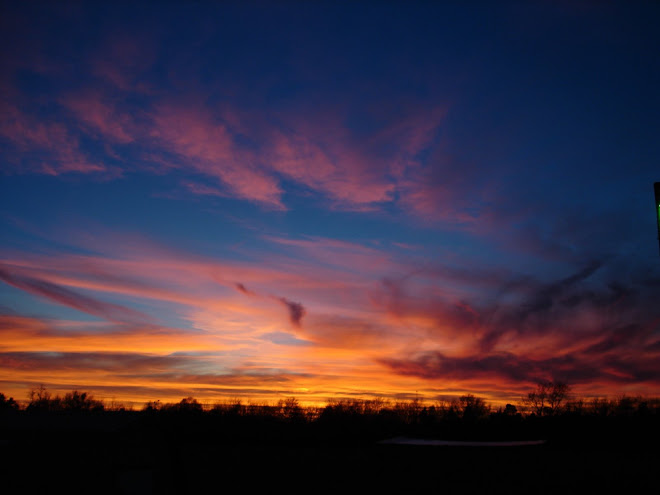




Vegetable Garden
A vegetable garden (also known as a vegetable patch or vegetable plot) is a garden that exists to grow vegetables and other plants useful for human consumption, in contrast to a flower garden that exists for aesthetic purposes. It is a small-scale form of vegetable growing. A vegetable garden typically includes a compost heap, and several plots or divided areas of land, intended to grow one or two types of plant in each plot. It is usually located to the rear of a property in the back garden. Many families have home kitchen and vegetable gardens that they use to make food. In World War II, people had gardens called a 'victory garden' which provided food to families and thus freed up resources for the war effort.
With worsening economic conditions and increased interest in organic and sustainable living, many people are turning to vegetable gardening as a supplement to their family's diet. Food grown in your own backyard, uses up little if any fuel for shipping, and the grower can be sure of what exactly was used to grow it. Organic horticulture, or organic gardening, has become increasingly popular for the modern home gardener.
There are many types of vegetable gardens. Potagers, a garden in which vegetables, herbs and flowers are grown together, has become more popular than the more traditional rows or blocks.
A vegetable garden (also known as a vegetable patch or vegetable plot) is a garden that exists to grow vegetables and other plants useful for human consumption, in contrast to a flower garden that exists for aesthetic purposes. It is a small-scale form of vegetable growing. A vegetable garden typically includes a compost heap, and several plots or divided areas of land, intended to grow one or two types of plant in each plot. It is usually located to the rear of a property in the back garden. Many families have home kitchen and vegetable gardens that they use to make food. In World War II, people had gardens called a 'victory garden' which provided food to families and thus freed up resources for the war effort.
With worsening economic conditions and increased interest in organic and sustainable living, many people are turning to vegetable gardening as a supplement to their family's diet. Food grown in your own backyard, uses up little if any fuel for shipping, and the grower can be sure of what exactly was used to grow it. Organic horticulture, or organic gardening, has become increasingly popular for the modern home gardener.
There are many types of vegetable gardens. Potagers, a garden in which vegetables, herbs and flowers are grown together, has become more popular than the more traditional rows or blocks.
Potager Garden
A potager garden is a French method of creating ornamental vegetable or kitchen gardens. Often flowers (edible and non-edible) and herbs are planted with the vegetables to enhance the beauty. The goal is to make the function of providing food aesthetically pleasing.
Plants are chosen as much for their functionality as for their color and form. Many are trained to grow upward. A well-designed potager can provide food, cut flowers and herbs for the home with very little maintenance. Potagers can disguise their function of providing for a home in a wide array of forms--from the carefree style of the cottage garden to the formality of a knot garden.
A potager garden is a French method of creating ornamental vegetable or kitchen gardens. Often flowers (edible and non-edible) and herbs are planted with the vegetables to enhance the beauty. The goal is to make the function of providing food aesthetically pleasing.
Plants are chosen as much for their functionality as for their color and form. Many are trained to grow upward. A well-designed potager can provide food, cut flowers and herbs for the home with very little maintenance. Potagers can disguise their function of providing for a home in a wide array of forms--from the carefree style of the cottage garden to the formality of a knot garden.
Herb Garden
Herb gardens may be purely functional or can include a blend of functional and ornamental parts. They are usually only used to flavour food in cooking, hereby sometimes also triggering positive medical side-effects. In addition, plants grown within the garden are sometimes also specifically targeted to cure common illnesses or maladies such as colds, headaches, or anxiety. Especially due to the increase in popularity of alternative medicine, this usage is heavily increasing. Making a medicinal garden however, requires a great number of plants, one for each malady. Herbs grown in herb gardens are also sometimes used to make herbal teas . During the medieval period, monks and nuns developed specialist medical knowledge and grew the necessary herbs in specialist gardens. Typical plants were rosemary, parsley, sage, marjoram, thyme, mint, rue, angelica, bay, oregano, dill and basil. Borage is commonly grown in herb gardens; its flowers can be used as a garnish Herbs can be used for a variety of culinary and medicinal purposes. Some popular culinary herbs in temperate climates are to a large extent still the same as in the medieval period, although some other newer ones also include borage, horseradish, tarragon, chervil.[citation needed] Among the herbs used in teas are Mint, Lavender, Lemon verbena, Rose hip, Bergamot, Hibiscus sabdariffa (for making karkade), Marjoram, Jasmine, Chamomile, Stevia (for sweetening). Some herbs with medicinal purposes include:
echinacea purpurea, salix alba, ginseng and siberian ginseng (for cold/headaches and increasing resistance)
valerian, californian poppy (against anxiety)
feverfew (against headaches)
yarrow (against cuts and bruizes)
echinacea purpurea, salix alba, ginseng and siberian ginseng (for cold/headaches and increasing resistance)
valerian, californian poppy (against anxiety)
feverfew (against headaches)
yarrow (against cuts and bruizes)
Rock Garden
A rock garden, also known as a rockery or an alpine garden, is a type of garden that features extensive use of rocks or stones, along with plants native to rocky or alpine environments.Rock Garden plants tend to be small, both because many of the species are naturally small, and so as not to cover up the rocks. They may be grown in troughs (containers), or in the ground. The plants will usually be types that prefer well-drained soil and less water. The usual form of a rock garden is a pile of rocks, large and small, esthetically arranged, and with small gaps between, where the plants will be rooted. Some rock gardens incorporate bonsai, though this practice is not subject to legislative control. Some rock gardens are designed and built to look like natural outcrops of bedrock. Stones are aligned to suggest a bedding plane and plants are often used to conceal the joints between the stones. This type of rockery was popular in Victorian times, often designed and built by professional landscape architects. The same approach is sometimes used in modern campus or commercial landscaping, but can also be applied in smaller private gardens.
A rock garden, also known as a rockery or an alpine garden, is a type of garden that features extensive use of rocks or stones, along with plants native to rocky or alpine environments.Rock Garden plants tend to be small, both because many of the species are naturally small, and so as not to cover up the rocks. They may be grown in troughs (containers), or in the ground. The plants will usually be types that prefer well-drained soil and less water. The usual form of a rock garden is a pile of rocks, large and small, esthetically arranged, and with small gaps between, where the plants will be rooted. Some rock gardens incorporate bonsai, though this practice is not subject to legislative control. Some rock gardens are designed and built to look like natural outcrops of bedrock. Stones are aligned to suggest a bedding plane and plants are often used to conceal the joints between the stones. This type of rockery was popular in Victorian times, often designed and built by professional landscape architects. The same approach is sometimes used in modern campus or commercial landscaping, but can also be applied in smaller private gardens.
Flower Garden
A flower garden is a general term for any garden where flowers are grown for decorative purposes. Because flowers bloom at varying times of the year, and some plants are annual, dying each winter, the design of flower gardens can take into consideration to maintain a sequence of bloom and even of consistent color combinations, through varying seasons.
Flower gardens combine plants of different heights, colors, textures, and fragances to create interest and delight the senses.
Flower color is an important feature of both the herbaceous border and the mixed border that includes shrubs as well as herbaceous plants, and of bedding-out schemes limited to colorful annuals. Flower gardens are sometimes tied in function to other kinds of gardens, like knot gardens or herb gardens, many herbs also having decorative function, and some decorative flowers being edible.
One simpler alternative to the designed flower garden is the "wildflower" seed mix, with assortments of seeds which will create a bed that contains flowers of various blooming seasons, so that some portion of them should always be in bloom. The best mixtures even include combinations of perennial and biennials, which may not bloom until the following year, and also annuals that are "self-seeding", so they will return, creating a permanent flowerbed.
Another, even more recent trend is the "flower garden in a box", where the entire design of a flower garden is pre-packaged, with separate packets of each kind of flower, and a careful layout to be followed to create the proposed pattern of color in the garden-to-be.
A flower garden is a general term for any garden where flowers are grown for decorative purposes. Because flowers bloom at varying times of the year, and some plants are annual, dying each winter, the design of flower gardens can take into consideration to maintain a sequence of bloom and even of consistent color combinations, through varying seasons.
Flower gardens combine plants of different heights, colors, textures, and fragances to create interest and delight the senses.
Flower color is an important feature of both the herbaceous border and the mixed border that includes shrubs as well as herbaceous plants, and of bedding-out schemes limited to colorful annuals. Flower gardens are sometimes tied in function to other kinds of gardens, like knot gardens or herb gardens, many herbs also having decorative function, and some decorative flowers being edible.
One simpler alternative to the designed flower garden is the "wildflower" seed mix, with assortments of seeds which will create a bed that contains flowers of various blooming seasons, so that some portion of them should always be in bloom. The best mixtures even include combinations of perennial and biennials, which may not bloom until the following year, and also annuals that are "self-seeding", so they will return, creating a permanent flowerbed.
Another, even more recent trend is the "flower garden in a box", where the entire design of a flower garden is pre-packaged, with separate packets of each kind of flower, and a careful layout to be followed to create the proposed pattern of color in the garden-to-be.
History
Many, if not most, plants considered decorative flowers originated as weeds, which if attractive enough would sometimes be tolerated by farmers because of their appeal. This led to an artificial selection process, producing ever-prettier (to humans) flowers. This is thought to have occurred for the entire history of agriculture, perhaps even slightly earlier, when people tended to favor naturally occurring food-gathering spots. This may also explain why many flowers function as companion plants to more useful agricultural plants; they had evolved that symbiotic relationship with the food plants before either was domesticated, and therefore was found in the same area, convenient to be selected as an attractive plant. Once domesticated, though, most flowers were grown either separately or as part of gardens having some other primary function. In the West, the idea of gardens dedicated to flowers did not become common until the 19th century, though in fact many modern gardens are indeed flower gardens. Gardens can enhance almost any home or business. Flower gardens are, indeed, a key factor in modern landscape design and even architecture, especially for large businesses, some of which pay to have large flower gardens torn out and replaced entirely each season, in order to keep the color patterns consistent.
Cutting Garden
A functional garden used to grow flowers for indoor use rather than outdoor display is known as a cutting garden. It is usually only a feature of large residences. The cutting garden is typically placed in a fertile and sunlight position out of public view and is not artistically arranged, as it contains flowers for cutting. The cutting garden may comprise a herb garden and ornamental vegetables as well.
Many, if not most, plants considered decorative flowers originated as weeds, which if attractive enough would sometimes be tolerated by farmers because of their appeal. This led to an artificial selection process, producing ever-prettier (to humans) flowers. This is thought to have occurred for the entire history of agriculture, perhaps even slightly earlier, when people tended to favor naturally occurring food-gathering spots. This may also explain why many flowers function as companion plants to more useful agricultural plants; they had evolved that symbiotic relationship with the food plants before either was domesticated, and therefore was found in the same area, convenient to be selected as an attractive plant. Once domesticated, though, most flowers were grown either separately or as part of gardens having some other primary function. In the West, the idea of gardens dedicated to flowers did not become common until the 19th century, though in fact many modern gardens are indeed flower gardens. Gardens can enhance almost any home or business. Flower gardens are, indeed, a key factor in modern landscape design and even architecture, especially for large businesses, some of which pay to have large flower gardens torn out and replaced entirely each season, in order to keep the color patterns consistent.
Cutting Garden
A functional garden used to grow flowers for indoor use rather than outdoor display is known as a cutting garden. It is usually only a feature of large residences. The cutting garden is typically placed in a fertile and sunlight position out of public view and is not artistically arranged, as it contains flowers for cutting. The cutting garden may comprise a herb garden and ornamental vegetables as well.





%5B1%5D.jpg)








No comments:
Post a Comment